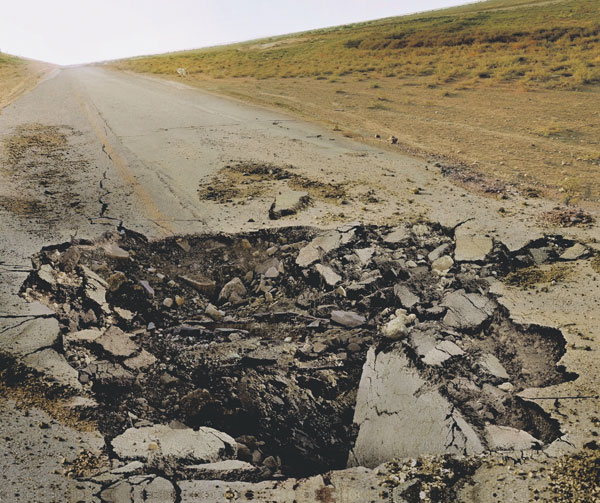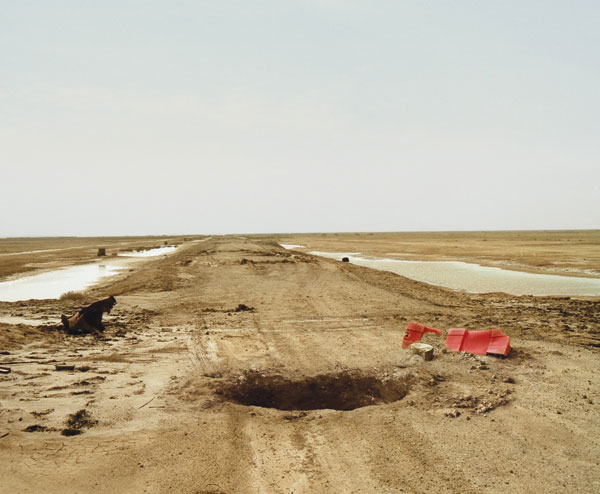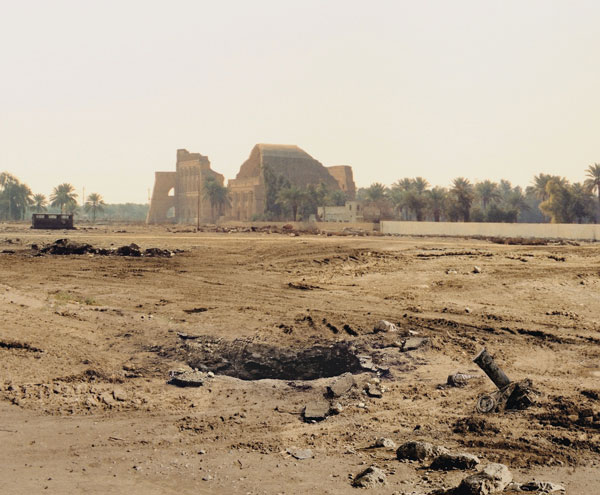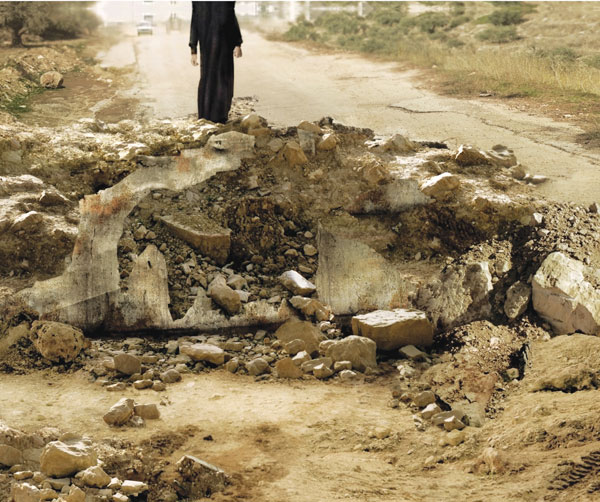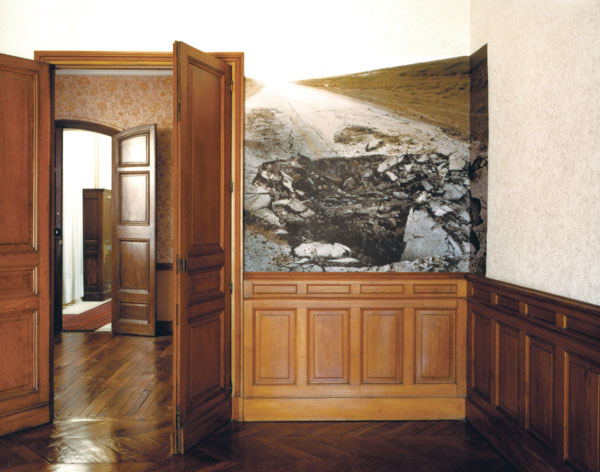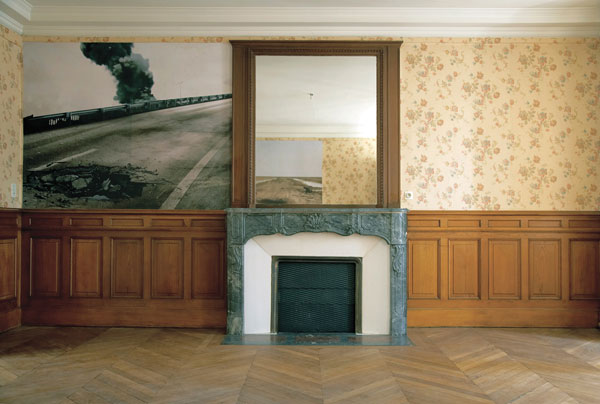[Summer 2010]
by Jacinto Lageira
The notion of “documentary style” was invented and practised by Walker Evans in the 1930s. It was so successful among his contemporaries, to judge by the quantitative and qualitative burgeoning of production, that artists quickly reached the limits of this new era of image – even though it seemed to promise a new and unprecedented approach, a fresh view, at the horizon of which the opposition between reality and fiction would no longer be relevant. This supposed revolution of the gaze bore its own contradictions and paradoxes, including the aestheticization – and, as a corollary, the devaluation – of reality; many artists even claimed that reality was obsolescent. In blurring the borders between the fields of the real and the fictional, the photographic or cinematic documentary style – as well as documentary literature and theatre – is at risk of sliding into a system of images completely cut off from reality and often opposed to it, when it does not seek to replace it pure and simple. There would be then only images, and images of images, detached from reality, from all references and veracity, such that facts and events would have no significance except through virtualized – or, better, de-realized – images. And when, as in Sophie Ristelhueber’s work, the subjects and sites appearing in the works are so strongly connoted geopolitically, the production of images cannot be a neutral act; it delivers a conception of history in that it also constructs facts and is not a banal capturing of what exists. More specifically, “that which is” appears only in and through a gaze, a perception, a form, something that we could call a poetics.
In these images everything is both true and false.
A parallel must be established here between the “documentary style” that visual artists and writers make use of – for example, Peter Weiss’s “documentary theatre” – and the historical account. Historians have always recognized, either to praise or to criticize it, that history is necessarily the making of a story, an account very close to a literary account that could be indistinguishable from the fictional account that some – for example, Hayden White – have championed. From Benedetto Croce to Jacques Rancière, the issue of a “poetics of history” has constantly arisen, the hazards of which are exactly the same as those found with the “documentary style” of images – that is, historical facts are not only reported in a fictional language but could suddenly become fiction, just like any novel. As Paul Veyne has cautioned, if history is a novel it is nevertheless “a true novel”; it remains, however, that the novelistic account, like the iconographic account, may no longer be distinguishable from fiction.
From early in her career, Ristelhueber has engaged these issues in her art: works on territory, geopolitics, and land; wars and their “stories,” in her artist’s books; and, especially, works placed deliberately in the in-between, operating in the visual and conceptual blur in which reality and fiction become confused. Speaking of this breach within which her work has been situated for more than twenty years, Ristelhueber claims “poetic licence.” Like the poet, or the historian (Jules Michelet, for instance), she allows herself shifts, metaphors, detours – figures of iconographic rhetoric, so to speak, that distance her work from the testimonial meaning supposedly attached to all photographs.
The works in Eleven Blowups (2006) manifest the most permissive poetic licence; the facts that we perceive in the images are, in fact, poetized. Not poetic, but poetized: made into image, formed, composed, in the first sense of the Greek term – creation, poiesis. As historians, sociologists, philosophers, and scientists know, facts are never given in and of themselves, but are always understood and grasped through a structure, an apparatus, an act that enables their apprehension – in this case, a visual act. It is in this way that Ristelhueber has constituted a poetics of the fact. Facts – in part images “of video rushes shot in Iraq by local correspondents for the Reuters agency,” and in part images of the artist’s previous work taken “in Armenia in 1989, Turkmenistan in 1997, Syria in 1999, Iraq in 2000, the West Bank in 2003–04” – are thus truthful representations when taken separately, but become imaginary when she amalgamates the images into one that, in the end, no longer exists anywhere but in this representation. As she frankly admitted in a commentary on the series, “In these images everything is both true and false.” Poetic licence resides not so much in the montage but in the fact that the search for these craters precedes their material factuality. Ristelhueber had this imagery in mind before she sought out the corresponding realities. Once she has found them through a diligent search, she takes and remodels the facts, but always based on their original truthfulness. She has not created these images out of whole cloth with some technology or other; she makes sure to confirm and reaffirm the factuality of what we perceive. Factuality in spite of everything.
The poetics of facts consists of saying, showing, exhibiting, and unveiling what we would not have seen had the fact been presented directly, naked, in itself. Yet, this “in itself” of the fact, what it really is beyond the gaze directed at it, its shaping by an act, a re-creation, a poietics, is a perfect illusion. The more we dwell on the composition, the more the imaginary dominates, as occurred with the presentation of a series in a house in Arles, where photographs were applied to the wall like wallpaper. The strong contrast between the décor of the bourgeois house and the content of these images made their intermixing even more distressing – both reassuring and terrible, what Freud called “disquieting strangeness,” an object both familiar and anxiety-provoking. Thus, we may observe that the poetics of facts, at least in Ristelhueber’s work, does not consist at all of embellishing horror or rendering facts so fictional that one no longer sees the reality of what the image refers to: murderous, bloody conflicts, dead people, injured people, the destruction of people and things. In a sense, the main subject of Ristelhueber’s work is never visible. And for good reason. We never see death frontally, only its traces.
Ruins, gutted, bombed landscapes, and exploded, pitted ground, as portrayed in Eleven Blowups, are, in the end, one of the innumerable facets that death may take. Ristelhueber talks about craters as “tombs.” Whether made by a missile, a shell, or an improvised explosive device, the crater is so violent and deep that the victims are absorbed into it, literally becoming the corpse for this tomb. The point is not to show the victims, but to seek to understand the tumultuous process that incites human beings to kill others by the thousands. It is difficult to explain the process, although various reasons may be evoked, but it is visible in what remains once it has occurred. That is, nothing. A void. The essence of death is this: that which is no longer visible, no longer there. A poetics of facts as a re-presentation in order to understand the significance of those facts is not possible unless the act of creation is also a dynamic, an engagement, a reaction, a point of view. Even if the poetics is an imaginary action, by its nature it wants to undo that which is unacceptable.
Translated by Käthe Roth
The French photographer Sophie Ristelhueber very early built a distanced photography practice that combines field experience with a rejection of reporting, and a predilection for conflictual situations with an allusive rendering of their traces. Her work has been widely published, including in her book Operations (Thames & Hudson, 2009). She had a major retrospective exhibition at Jeu de Paume in 2009 and recently received the Deutsche Börse Photography Prize for 2010. Sophie Ristelhueber is represented by Galerie Catherine Putman in Paris and galerieofmarseille in Marseille.
Jacinto Lageira is a professor of aesthetics at Université de Paris 1 Panthéon-Sorbonne, and an art critic. He has published L’Image du monde dans le corps du texte (2 vol.) (Brussels: La Lettre volée, 2003); L’Esthétique traversée (Brussels: La Lettre volée, 2007); and La déréalisation du monde (Paris: Éd. J. Chambon, 2010).

